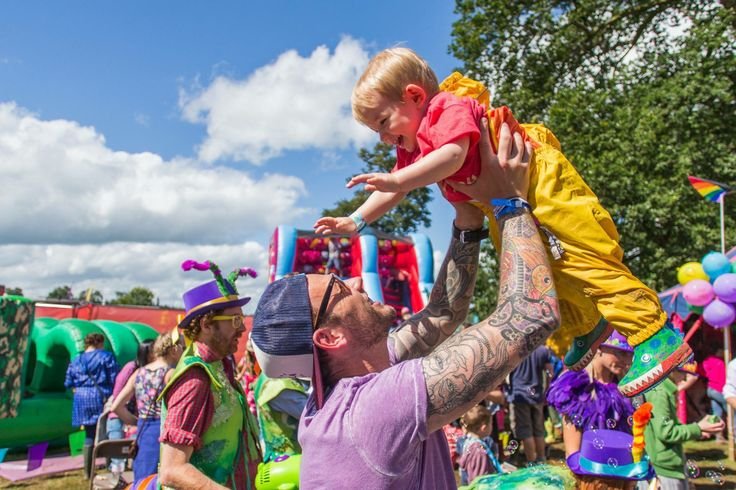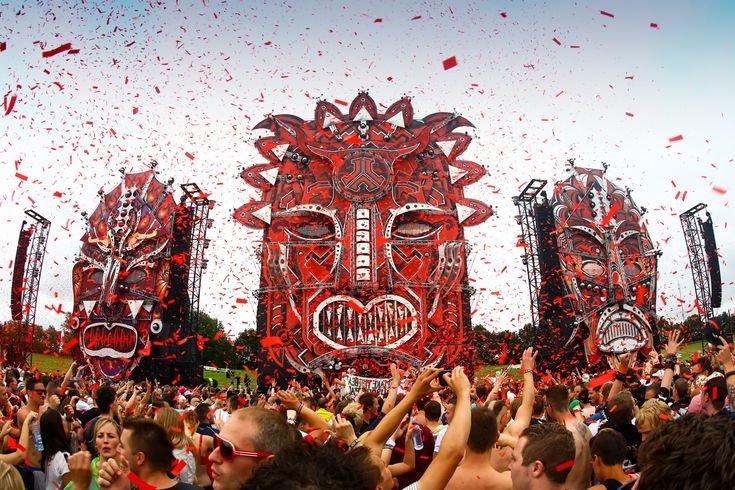Introduction to Strangest Festivals
The world is a vibrant tapestry of cultures, each weaving unique traditions and celebrations that reflect their distinct identities. Among these, festivals stand out as particularly fascinating expressions of cultural heritage, with some veering into the realm of the peculiar. Unusual festivals serve not only as entertainment but also as a means of preserving age-old customs and fostering a sense of community. They capture the imagination of both locals and tourists alike, drawing attention to practices that might seem odd from an outside perspective.
La Tomatina: The Tomato Throwing Festival

La Tomatina is an exhilarating festival that takes place annually in the small town of Buñol, Spain. This unique event, characterized by the thrilling act of throwing ripe tomatoes at one another, has evolved significantly since its inception. The festival dates back to the mid-20th century and is believed to have originated from a local food fight during a parade, which inadvertently birthed this festive tradition. Initially celebrated by a small group, it eventually garnered immense popularity, attracting thousands of participants from around the globe.
As the festival grew, certain guidelines were established to ensure the safety and enjoyment of all attendees. The tomato-throwing takes place on the last Wednesday of August, and participants are asked to adhere to specific rules, such as squashing tomatoes before throwing them, to minimize the risk of injury. Additionally, there are strict regulations regarding the types of clothing worn, with many individuals donning old outfits that can be discarded after the event. The community of Buñol plays an essential role in the festival’s organization, contributing to its seamless execution and maintaining a harmonious atmosphere amidst the playful chaos.
La Tomatina not only celebrates the joy of communal festivities but also fosters a sense of identity amongst the locals. For the people of Buñol, this vibrant event serves as both a tourist attraction and an opportunity to showcase their culture. Participants engage in friendly competition, laughter, and camaraderie, transforming the town square into a scene of delightful disorder. Each year, the festival culminates in a celebratory cleanup, exemplifying the community’s spirit. The festival undoubtedly stands out as a fantastic example of how a simple local tradition can transform into an extraordinary event embraced by many, making La Tomatina a must-experience spectacle for festival enthusiasts around the world.
Holi: The Festival of Colors

Holi, often referred to as the Festival of Colors, is a significant Hindu festival celebrated primarily in India and Nepal, marking the arrival of spring and the victory of good over evil. This vibrant festival has its roots in ancient traditions, with references found in various texts, including the Puranas. Holi is also associated with various mythological tales, one of the most popular being the story of Prahlad and Holika, symbolizing the triumph of devotion and righteousness.
The significance of Holi extends beyond mere celebration; it embodies the spirit of togetherness and communal harmony. During the festival, participants engage in lively gatherings where they throw colored powders, known as ‘gulal,’ at each other, creating a myriad of colors that adorn the environment. This unique practice symbolizes the beginning of spring and serves as a reminder that life is vibrant and filled with joy. The act of throwing colors fosters a sense of unity, as people from diverse backgrounds come together to celebrate without barriers.
The celebrations of Holi are also marked by music and dance, with traditional songs that echo through the streets, enhancing the festive atmosphere. People participate in group dances, creating an environment filled with joy and enthusiasm. Additionally, the communal sharing of food is an integral part of the festival, as families and friends prepare a variety of sweets and snacks to be enjoyed during the festivities. These customs and rituals exemplify the underlying theme of Holi: to spread love, friendship, and welcome new beginnings. Through the playful throwing of colors, joyous music, and shared meals, Holi fosters a sense of community and peace, making it one of the most cherished and colorful festivals in the world.
Running of the Bulls: Pamplona’s Fiesta

The Running of the Bulls, known as “Encierro” in Spanish, is a vital event that takes place during the San Fermín festival in Pamplona, Spain. This annual celebration occurs from July 6th to July 14th and draws thousands of participants and spectators from around the globe. Originating in the early 14th century, the event initially served as a means of transporting bulls from the fields to the bullring for later events. Over time, it transformed into a daring spectacle where individuals run through the streets alongside these powerful animals.
Baby Jumping Festival: El Colacho

The Baby Jumping Festival, known locally as El Colacho, is a distinctive event held annually in Castrillo de Murcia, Spain. This peculiar festival, which has roots dating back to the 17th century, involves men clad in traditional devil costumes who leap over babies lying on mattresses in the street. The ritual is believed to serve a dual purpose: to cleanse the infants of original sin and to provide protection against malevolent spirits. This practice intertwines religious significance with local customs, making it a cornerstone of the community’s cultural heritage.
The origins of El Colacho can be traced to local traditions and the Catholic Church’s influence in the region. The event coincides with the Feast of Corpus Christi and has evolved over the years, capturing both the imagination of locals and tourists alike. The community views this event as a rite of passage for infants, signifying their acceptance into the faith and the broader community. While some may find the practice alarming, many parents wholeheartedly embrace the custom, believing it ensures the well-being of their children.
Accompanying the jumps, the festival features colorful parades, traditional music, and dancing, creating a vibrant atmosphere that attracts spectators from around the globe. The event has garnered media attention over the years, with numerous articles and broadcasts showcasing the cultural significance and unique spectacle of the infant jump. These elements work together to enhance the town’s cultural identity, providing an opportunity for social connection and enjoyment among the local population and visitors.
Despite the occasional critiques of the festival’s unconventional nature, El Colacho remains a cherished tradition in Castrillo de Murcia, illustrating how cultural practices can transcend eras, while bringing communities together in celebration of their shared history.
Monkey Buffet Festival: A Feast for Primates

The Monkey Buffet Festival is a distinctive cultural event held annually in Lopburi, Thailand, which attracts locals and tourists alike. This unconventional celebration, occurring during the month of November, pays tribute to the town’s significant monkey population, particularly the Macaques that roam freely through the streets and historical sites. The origins of this unique festival are rooted in the local belief that by honoring these primates, the community will receive good fortune and prosperity.
The festival centerpieces are vast amounts of food prepared specifically for the monkeys. Local residents and businesses collaborate to create an impressive buffet that includes a variety of fruits, vegetables, rice, and even cakes. This extravagant spread draws thousands of monkeys, who eagerly partake in the feast, creating a captivating spectacle for onlookers. The preparations for this event are extensive, with volunteers and participants working tirelessly to ensure that the dishes are plentiful and diverse, reflecting the community’s dedication to the well-being of their primate neighbors.
During the festival, the interaction between humans and monkeys is notable. While the monkeys are accustomed to human presence, the festival serves as an opportunity to promote understanding and appreciation of these creatures. Attendees witness the playful antics of the monkeys as they feast, showcasing their intelligence and social behaviors, which fosters a sense of connection between species. Additionally, the festival highlights conservational efforts aimed at protecting the local monkey population and their habitat.
In summary, the Monkey Buffet Festival not only serves as a whimsical feast for the monkeys but also reinforces the cultural bond between the residents of Lopburi and their primate counterparts. It promotes tourism and conservation, illustrating how unique traditions can foster a greater understanding of wildlife preservation.





